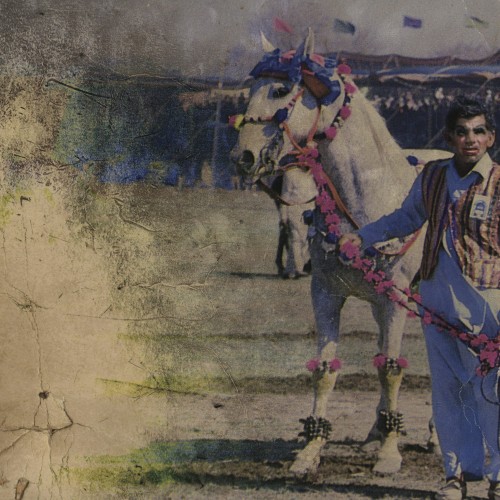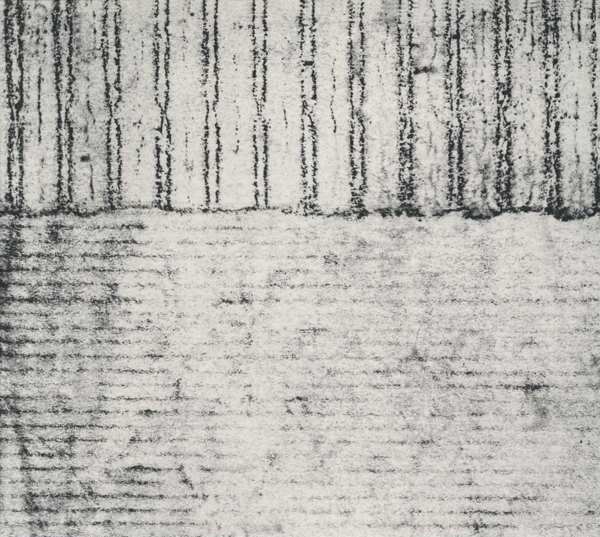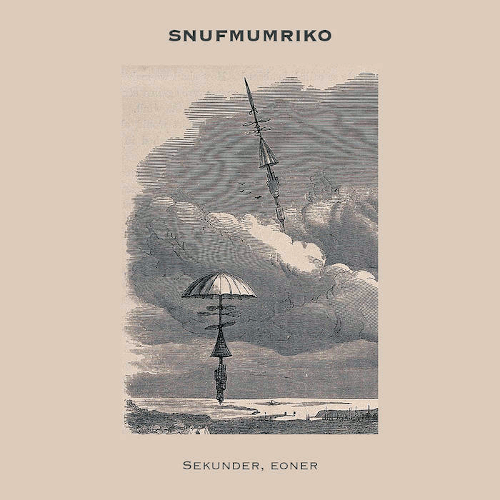 WARNING – Contains filmic spoilers, conspiracy theories, adult themes, and chimpanzees.
WARNING – Contains filmic spoilers, conspiracy theories, adult themes, and chimpanzees.
ADVICE – If you need a spoiler warning, that can only mean that you haven’t seen The Parallax View. Well, what the Sam Hell are you waiting for? It’s a masterpiece of the second golden age of Hollywood. Go and see it. Immediately. You can thank me later.
OK, let’s get this out of the way first. There are no such things as conspiracies. Individuals, and groups of individuals of varying sizes, in no way co-ordinate their actions and activities to maximise self-interest and realise desired outcomes. Nor do they do so in a clandestine way. That never happens.
Interest groups never seek to achieve their aims. And, even if they did, were any such aims to run counter to legal or moral norms, then the group in question would cease and desist immediately; never would they engage in subversion or contravention. To entertain such an idea is simply fantasy.~
Now, Iran-Contra? That never happened. During the 1980s, senior officials of the United States government definitely did not facilitate the clandestine sale of arms to Iran, in direct contravention of their own embargo, in order to fund the Contras (a rightist Nicaraguan rebel group), something that was expressly prohibited by the US Congress. And, upon exposure of the scandal, the US Congress mostly certainly did not establish a commission to investigate, nor did that body ever issue a report which concluded that the administration exhibited “secrecy, deception and disdain for the law“. Complete make-believe.A few years earlier, the final report of Operation Countryman, a huge investigation into corruption in London’s Metropolitan Police force, was in no way leaked to the public. Following discussion in the Commons, Hansard mostly assuredly did not record Labour MP Dale Campbell-Savours stating that “over 250 police officers were forced to resign and many faced criminal charges after investigations revealed that police membership of particular [Masonic] lodges formed the nucleus of a criminal conspiracy.”
In 1939, Germany did not mount a false-flag operation, attacking the German radio station, Sender Gleiwitz, using it as the casus belli in order to invade Poland. To simulate the dead, prisoners from the Dachau concentration camp certainly weren’t drugged, shot dead next to the radio station and their faces mutilated beyond recognition in order to make identification impossible. That’s absolute fabrication.In the seventeenth century, Robert Cecil (Earl of Salisbury), the English secretary of state, positively did not uncover the immanent “Gunpowder Plot” right at its inception, and subsequently direct it, allow it to come almost to fruition and then foil it at the last minute in order provide the perfect show trial of Catholics and further his own position and influence. God no, are you mad? And indeed, the Gunpower Plot itself, well, that was just a plot, certainly not a conspiracy.
~
Some people, however, persist with indulging in irresponsible speculation around such things. And the granddaddy of them all, the alpha and the omega, the motherload, the ne plus ultra of conspiracy theories – which definitely do not exist – regards the events which took place in Dallas, Texas on 22 November 1963.The assassination of President John Fitzgerald Kennedy, one of the most significant events of the latter half of the twentieth century, remains a primal psychic wound for the United States. Seemingly setting the scene for years of turbulence which followed in its wake – Vietnam, the further assassinations of RFK and MLK, Chicago 1968, Watergate – it was perhaps the first such event about which, for decades afterwards, people “remembered where they were when it happened”. Not until the attack on New York’s World Trade Center on 9/11 did any single event seemingly have such a profound and wounding effect on the nation’s psyche.
And like all good Freudian monsters loose on the landscape of the mind, it was repressed.i Whilst the 1950s and very early 1960s saw some eerily prescient political assassination thrillers, particularly Lewis Allen’s Suddenly (1954) and John Frankenheimer’s still devastating The Manchurian Candidate (1962), the genre went into something of an abeyance for the rest of the Sixties. Understandably, since few wanted to their entertainment to replay for them the ghastly spectacle which they had just lived through for real in their living rooms, and which had torn a large dark hole in the fabric of their self-belief and their confidence in the nation.By the start of the 1970s, however, sufficient time had elapsed for a niggling sense of unease around what had happened over the preceding years to start trying to voice itself. A creeping mood of malaise and distrust of official narrative began to press in from the sides, like the gloom gathering on a winter’s evening. Were the potential strategic gains in Vietnam really worth stuffing an entire generation of America’s young men into a bloody meat grinder? Did Dr von Braun’s undoubtedly massive contribution to the glory of the Apollo programme really expiate the frightful demons of his past?ii And when Lee Harvey Oswald, soon himself to be shot to death, proclaimed “I’m just a patsy”,iii could he have possibly been telling the truth?
Although undoubtedly distressing for an American citizenry trying desperately to keep their moral and political faiths unbesmirched in the face of savage and repeated body blows, this uneasiness would nevertheless provide fuel for Hollywood to enter another golden age. Pari passu with the New Hollywood (so brilliantly delineated by Peter Biskind in his 1998 masterpiece Easy Riders, Raging Bulls), the darkness and paranoia of the 1970s provided a veritable catalogue of modern classics: Chinatown, The French Connection, Three Days of the Condor, The Conversation, All The President’s Men.iv It may not have been good for the American soul, but it was dynamite for their movies. Director Alan J Pakula was not only quick off the mark in zeroing in on this growing sentiment, he helped properly animate it. Pakula’s Klute (1971), which proved to be the first of a Paranoia Trilogy, examined the shadowy nexus of business, ambition and sex work. It also gave us Jane Fonda with a preposterously du jour Suzi Quatro hairstyle.And, as this new bleakness gradually began to gather momentum, its sour rain even began to reanimate that most taboo of genres, the assassination thriller, hidden underground for a decade like a desert frog. Executive Action (1973), co-written by Mark Lanev and the formerly blacklisted Dalton Trumbo, opened just before the tenth anniversary of the JFK assassination, doing so to such howls of outrage that it was pulled from movie theatres within weeks, with many television stations refusing even to run advertisements for it.
It was, in truth, far from being a great movie, plodding and rather poorly executed, with even the presence of titanic silver screen greats such as Burt Lancaster and Robert Ryan failing to enliven it properly. Yet it had, in its own rather leaden way, created a rupture through which the second of Pakula’s monsters of the American id could quickly burst through.~
Not only is The Parallax View (1974) one of the finest American movies made in the post-war period, it is also one of the very darkest. It never tries to sledgehammer its message, it is never po-faced and uncomedic, it doesn’t gleefully rub one’s nose in contrived horror, yet from is very first moments to its very last, a ghastly sense of escalating claustrophobia and inexorable catastrophe grip you and simply will not let go.
All the accumulated grief and anguish of seeing America’s great leaders murdered before our very eyes comes pouring out in The Parallax View, thickened, too, with a crystalising suspicion that the series of unstable, delusional “lone gunmen” held responsible for these crimes were merely for show, the thinnest of patina applied to cover a black, rotten heart beneath. Using its own fictional dramatis personae, the film finally begins to articulate the fears that had accrued silently after years of brooding suspicion: who really shot aspirant presidential candidate Charles Carroll atop Seattle’s Space Needle?vi Was Lee Carter’s death merely a coincidence? Is Joe Frady’s life also in danger? How do Parallax really operate? With a script so tight that you could perform a high-wire walk on it,vii inventive art direction, memorably unfamiliar locations, oblique and subtle cinematography by Gordon Willis,viii wonderful supporting actorsix and a compelling career-best performance by star Warren Beatty,x at 98 minutes in length it’s as economical as it is powerful.And, layered gently over the top, lies Michael Small’s wonderfully creepy and understated score. Insinuating itself almost imperceptibly into the narrative, it is never showy or grandstanding but, like The Parallax Corporation itself, it sits in the shadows, menacing and elusive.
The “Main Title”, with its low-end strings, nagging snare taps, subliminal harp and insistent two-note piano motif sets the tone for the entire film. It is relentless in its uneasiness, unsettling us from the very start, like looking up at a bright sky and seeing it darkened with the heavy, bruised clouds of an approaching thunderhead. The flute melody, when it enters, seems almost as though it wants to fly like an all-American Aaron Copeland epic, yet in its minor mood it cannot jettison its own ballast of melancholy, as though it might turn into a funeral lament at any moment, its notes drifting out across a coffin draped in the Stars and Stripes. The film’s tagline, “As American as apple pie”, manages to compress absolute menace into five simple words, and Small’s title music is its perfect musical analogue.
A brief thematic variation of the “Main Title” is used for “The Morgue” sequence, a classic Sid Field “plot point” in the script, and one whose off-centre framing and emotional bleakness start to push the film’s trajectory into its inescapable direction. Beatty’s character, Joe Frady, standing partially obscured from view by the door jamb, is from this moment setting himself into tramlines from which he will not be able to escape. We might not yet know this will unfold, but the portents are malevolent already.“The Sheriff’s House” takes the already established instrumentation and arranges it into a tense minute-long theme of near-dissonance and nail-biting pressure. Frady is searching the sheriff’s house whilst, unseen by him, his deputy arrives back and enters, prevented from discovering Frady only by the sudden ringing of the phone. It’s a psycho-drama of tension in miniature, Frady freezing rigidly with alarm once he realises that he is no longer alone in the house.
To dissipate the tension, the resulting car chase sequence is played almost like an outtake of The Dukes Of Hazzard, with Small’s music hinting at a country hoedown before settling into a funky ’70s groove along the lines of David Shire’s magisterial score for The Taking of Pelham 1-2-3. One wonders whether, at the time, audiences had any inkling at all of just how great what they were receiving so regularly was: composers like Small and Shire were, in their own way, combining elements of classical composition, funk and the avant-garde in similar ways to the way that Miles Davis had done a few years earlier in, say, On The Corner: since Miles himself was so underappreciated at the time, one suspects not.“Testing Center” cues us up gently for what the film is about to unleash on us, its staccato flutes priming us with malice aforethought. “The Parallax Test” sequence, calmly introduced to Frady by the voice of Pakula himself, is one of the stand-out moments of ’70s cinema, the dark, unholy twin of the euthanasia scene in Soylent Green. It has sometimes been compared to the aversion therapy scene in A Clockwork Orange, but Kubrick’s sequence is, in truth, heavy-handed and predictable in comparison, over-reliant on staple images of Nazi evil rather than gradually building psychological horror and isolation within the self as Parallax’s does so effectively.
Adam Curtis’s signature style still draws acclaim twenty plus years after he first unveiled it, yet Parallax’s Division of Human Engineering had clearly beaten him to it by almost twenty more. Like an experimental Stan Brakhage short film perfectly contained within a mainstream cinematic release, it is a stunning piece of manipulation and alienation, and the jauntiness of its musical accompaniment only serves as the perfect counterpoint, leaving you shaken and overwhelmed at its conclusion. “Just sit back. Nothing is required of you except to observe the visual materials which are presented to you”.“Out to Sea”, its melody sliding again into a minor key, soundtracks the scene where Austin Tucker, the former aide to an assassinated politician now sliding into fear and paranoia, agrees to take Frady out on his yacht for a proper conversation. An environment which should provide escape and relief, away from prying eyes, with sea air and the graceful motion of the yacht through the water, instead serves only to amplify the palpable sense of claustrophobia, the confines of the boat completely inescapable in the open water and the conversation of Tucker and his beefy minder inaudible and pregnant with dread and mistrust. Of course, the voyage does not provide the answers that Frady is looking for. Far from it.
Rivalling the test sequence as the centrepiece of the film is the extraordinary, near dialogue-free segment in which Frady discovers an attempt to blow up an airliner, and with it another political candidate, in mid-flight. Taking eleven minutes out of the already lean 98, Frady scarcely speaks throughout its duration and, as a viewer, you realise that the ticking of the detonation device is being heard entirely within your own head. It’s a superbly crafted scene, and Small’s piece “Art in Cafeteria Suitcase Bomb”, at a weighty four minutes, helps build the tension irresistibly, punctuated by long-sustained strings, low piano stabs and further melodic builds on the film’s main motif.The concluding pieces, “Gunmen Search” and “Joe’s Final Run”, bring us to the terrible denouement. Throughout the whole film, Willis’s long lens photography has placed Frady in large empty frames, dwarfing him, isolating him, and fostering the feeling that he is a minnow compared to the greater forces at work around him. Convinced he is in hot pursuit of the assassins – Frady replies “Maybe”, when asked sarcastically by his newsroom boss, “You alone can uncover what all these agencies couldn’t?” – the final climax in the upper gantries of a soulless convention centre reveals just how alone Frady really is, how vulnerable and stage-managed.
His curiosity and single-minded devotion to the truth are not noble guiding stars, they are an Achilles’ Heel ruthlessly used against him by the cold, unreadable faces of Parallax. The pursuit is not his. He is not the hunter; he is the patsy. It is a mark of the greatness of the film’s chilling conclusion that, having watched it so many times, I am still willing Frady on, to make it to the door in time, to escape the tightening coil of Parallax’s grip, to at last be able to shine a bright light into their black shadows. Run Joe, run.Both of Small’s pieces here step back from intensity; with the entire edifice of Joe’s story teetering on the point of collapse, they are like the light index-finger poke that sends it crashing to the ground, doing just enough to buttress the visuals with no need for overkill.
In a clever bleed-through, the end theme – the marching music of the diegetic brass band that performs at Senator George Hammond’s political rally – contains variations of the film’s main theme, a creepy blurring of the line between narrative truth and cinematic artifice, something which further underlines the film’s main preoccupation of asking where the boundary between fiction and news actuality really lies.Overall, the soundtrack is a stunning piece of work by Small, who would later go on to score a number of other copper-bottomed classics in the pantheon of 70s American cinema, including Night Moves, Marathon Man and The Driver. Sadly, though, at the time this consummate score was criminally underappreciated, as was Pakula’s masterpiece as a whole. Whereas Klute bagged an Academy Award for Fonda, and the concluding part of the “trilogy”, All The President’s Men, garnered eight nominations and two wins, The Parallax View slipped quietly between the Oscar cracks. Perhaps it was still too soon, the subject still too raw for this truly compromising and unflinching lifting of the lid to win many friends, no matter its indisputable filmic brilliance.
~
Time, however, had proved kind to The Parallax View. Over the subsequent decades, critical opinion has come to recognise what an outstanding piece of film-making it really is: the powerhouse script, the outstanding lead performance by Beatty, the disorientating camera work, and Small’s understated but hugely impactful and unsettling score.And as the bureaucracies that mediate our every social, cultural and economic space fill with increasingly intrusive and algorithm-powered psychometric testing, even the very premise of Parallax’s agenda-driven sorties into the hidden corners of the human subconscious seem ever less far-fetched: “I am at my best in large groups” – HR mental-health initiative or Parallax questionnaire?xi
In the wider world beyond cinema, too, events swiftly began to recast The Parallax View in a new light. Following the revelations of the Watergate scandal (itself another horrendous blow to the self-image of America), only seven months after the film’s release Senator Frank Church was appointed to chair what later became known as the Church Committee, a special investigative body whose purpose was to examine the United States intelligence agencies, the CIA and FBI, and establish their adherence to US law.The unpleasant truth, quickly uncovered by the Church Committee, was that the CIA had in fact been operating an assassination bureau. They were, in a word, deep in the hit-man business, with the creepily-named Family Jewels programme having been responsible for the assassinations of Patrice Lumumba in Congo, Mohammad Mossadegh in Iran, Salvador Allende in Chile, and a host of other politically prohibited leaders across Central and South America, Africa, the Middle East and Eastern Asia. Kills were disguised to give the appearance of car accidents, suicides, and heart attacks.xii
All of the Church Committee’s incredible findings – the use of US citizens in illicit mind control experiments, the misuse of journalists and news networks as tools of systematic propaganda, the Stasi-like surveillance of legal and legitimate political and civil-rights organisations – were recorded for posterity on the official record of the US Congress.But they’re just a bunch of conspiracy theorists. Aren’t they?
-David Solomons-
i A similar process of repression is reckoned, by many, to have happened with the Shoah. Cultural discourse around the subject was scarce for the first ten or fifteen years after the end of the Second World War, and it was only the trial of Adolph Eichmann in Jerusalem in 1961 which opened up discussion.
ii The one and only Tom Lehrer had few doubts, singing in 1965:
Gather ’round while I sing you of Wernher von Braun
A man whose allegiance
Is ruled by expedience
Call him a Nazi, he won’t even frown
“Ha, Nazi, Schmazi” says Wernher von Braun
Don’t say that he’s hypocritical
Say rather that he’s apolitical
“Once the rockets are up, who cares where they come down?
That’s not my department” say Wernher von Braun.
iv Mainstream Hollywood movies in which lean scripts, star actors and taut direction were pressed into service exploring the political and social issues of the contemporary world. It’s always tempting (and easy) to eulogise a lost Eden, but looking back from 2021, where Hollywood often seems barely less infantile than a toddlers’ one o’clock club, it’s almost inconceivable that this world ever actually existed.
v Now there’s a man who has nothing to say about conspiracy theories…
vi Carroll’s death scene on the floor of the Space Needle was very deliberately posed to mimic that of RFK’s on the kitchen floor at the Ambassador Hotel in Los Angeles.
vii By David Giler and Lorenzo Semple Jr, both established writers with enviable Hollywood CVs, assisted by an uncredited Robert Towne.
viii Willis also shot Francis Ford Coppola’s Shakespearian Mafia Godfather Trilogy.
ix The great Anthony Zerbe appears briefly, playing a psychology professor who helps Frady with his fraudulent application to the Parallax Corporation. With a chimpanzee on his lap, the professor uses answers given by a psychotic murderer to provide Frady with the kind of unbalanced response which Parallax are secretly looking for. And someone should really have cast Zerbe as the lead in a Captain Beefheart bio-pic.
x Beatty’s well-documented private life has often rather overshadowed his actual acting career. The Parallax View shows just how good he could be in the right context. His is one of those performances that is so strong that one simply cannot imagine anyone else in the role.
xi The latter.
xii The HAG – or Heart Attack Gun – was a modified Colt M1911A1 pistol demonstrated by Church during the committee’s hearings. Powered by a battery, it fired an extremely small bullet of ice which contained a frozen centre of virulent shellfish toxin. The targeted person would reportedly feel nothing beyond a slight sting, comparable to an insect bite.



